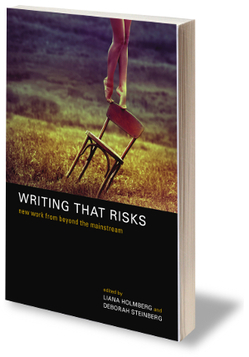The Cinnamon Mother and Other Stories by James Warner
The Cinnamon Mother and Other Stories
by James Warner
You wrote to ask me about some folktales transcribed by the Silesian forest inspector Hertwig Oppeln.
This trove of zaubermärchen was issued in a privately printed collection, a copy of which I found in a university library. Oppeln began transcribing these stories in the 1840s in Breslau, about a century after the Silesian capital was annexed by Prussia. Like other preservers of oral tradition—a project then being undertaken all over Europe, if nowhere more methodically than in the German principalities—Oppeln sought to record the vanishing pagan past.
In the collections by the Brothers Grimm, it is generally stepparents who are wicked, although in the Grimms’ original sources, biological parents themselves are often the abusive ones. Oppeln’s newly-discovered fairy tales are unusual in the extent to which they vilify children. In one story, a girl kills both her parents, first insisting her father must not devour his own head, which he promptly does to spite her, then begging her mother never to summon Kvatzenspratzenzotkin, a Silesian mountain spirit who appears only when someone farts his name. I might think of Kvatzenspratzenzotkin as a preposterous figure rather than one of sheer terror, were it possible for me to unsee the illustration on p. 59.
Scatological themes dominate Oppeln’s earlier tales. In “The Lazy Mother,” a boy invites his parents to a cloud palace, bidding them to sleep where they choose. His mother naps on eiderdown, and is punished by being pecked to death by ducks. His father, more prudently, rests on a dung heap and is “rewarded”—that is the word in the text—by being remarried to a stork.
After transcribing the stories his informants told him, Oppeln vigorously crossed out the parts he found most disturbing. Some crossed-out sections have been partly reconstructed by his editors, but entire stories, like “The Slattern, the Sluggard, and the Swineherd,” were erased so violently they have proved impossible to recover beyond their titles.
“The Town Oven” transpires in a town whose main meeting-hall is inside a giant oven. During a famine caused by a siege, the town parents meet in the oven and decide their only recourse is to eat the town children. No reader who has persevered this far will be surprised when the children eavesdrop on the meeting, lock their parents inside the oven, and roast them.
Most traditional narratives exist in dozens or hundreds of different variants, which makes the uniqueness of most of Oppeln’s stories highly problematic. Although one explanation might be that he recorded fables other collectors had the good taste to suppress, my own belief is that his primary source, Anka Geltst—a barmaid at the Brauhaus Ślůnsk, who Oppeln believed was retelling him stories she’d learned in childhood—was actually fabricating them. The garish, colored illustrations in this volume are by Geltst, and amply reflect her morbid sensibility.
Oppeln and Geltst were lovers—his letters to her are included in an appendix, although her share of the correspondence has not been located—and this consideration complicates any interpretation of these tales, in which girls are always arranging marriages for their fathers, women give birth to goats and turnips, and children lure their parents into the woods and abandon them.
“The Story of Little Ortolf, Who Turned His Parents Into Chocolate” concerns a boy whose parents are transformed into whatever he desires, with tragic consequences. In “The Louse,” a brother delousing his sister finds a magic insect who tells him how to become emperor. He marries his sister, who becomes empress, but their incestuous liaison is punished in a manner Oppeln has scribbled out so viciously the ending cannot be deciphered.
Geltst became pregnant in 1848, the year Oppeln transcribed “The Bed of Rats.” Two newlyweds at an inn must sleep in a bed that is really a mound of rats shaped like a bed—however unpleasant your mental image of this might be, the illustration on p. 113 is worse. The bride survives the night by continually complaining that the bed is too comfortable for her, but the groom makes the mistake of crying out in agony, and is gnawed to the bone.
Oppeln never acknowledged paternity of Geltst’s first child, who appears to have been born with some kind of deformity, and died within a year. In one of his letters to Geltst, Oppeln included a list of reasons why he could never marry a woman who was a barmaid, or a Jewess, or had a squint.
“The Ogresses’ Picnic” was not transcribed till 1851. It describes the revenge of an ogress on the hunchback who has spurned her. She takes him picnicking by an underground stream with her sisters, and I would advise any reader to put the book down before discovering what happens next. I am not surprised Oppeln was unable to find a publisher for the manuscript in his lifetime. I find myself involuntarily defacing the illustrations in my copy, to avoid looking at them, something I have not had to do since a copy of Heinrich Hoffman’s Struwelpeter manifested itself in my boyhood night nursery.
In Geltst’s tale “The Unhelpful Swans,” a brother is encouraged by waterfowl to chastise his sister by incinerating her. Although only a lump of charred flesh, she returns home with him from her funeral pyre, and attempts to marry him. He attempts escape by tearing himself into pieces, but she tears herself apart also, and a mass wedding ensues where each piece of each sibling marries a morsel of the other. His left foot, for example, marries her stomach. Throughout these stories, birds give terrible advice.
The picture on p. 170 left me too afraid to read “The Changeling and the Starveling,” but I did get through “The Bad Horse,” in which a girl is ravished by a horse in a dream and, during her ensuing pregnancy, endures successive cravings first for frogspawn, then for blood, and finally for a substance Oppeln succeeded in blotting out. Finally a great cloud of horseflies descends and bears the girl away.
Oppeln and Geltst resumed their affair, and in 1853 she gave birth to a second child, healthier than her first. After the death of Oppeln’s wife, the stories take on a somewhat more moralistic tone. In one, a variant of which I have seen in an anthology of Yiddish folklore, a woman who is excessively proud of her hair is impaled on the teeth of a giant comb, there to be devoured by glossy ravens for her vanity. Another tale, penned in a rawer dialect than the others, features a goblin who makes girls pregnant by sneezing on them.
Geltst’s last tales horrified me the most. In “The Broken Promise,” a maiden’s father gives her a doll made of shit she must vow never to lose.
In “The Cinnamon Mother,” geese tell a boy who has no mother how to construct one from streusel. The things this cake-golem does to her boy alone would justify destroying all copies of this book. Worst of all is the illustration on p. 309, where she engulfs him to protect him from the snow. Better to perish of cold than to be smothered in fat, flour, sugar, and cinnamon. The boy’s buckled shoes protrude from the crumbly topping, and his bulging eyes stare forth from the batter—he has chewed off his mother’s head, but she has devoured him anyway. “Stop, you terrify me, oh accursed substance!” are his last words, the dialog in these stories owing less to Heinrich Hoffman than to E.T.A. Hoffman.
Elsewhere he calls her a sugary ghoul. Never again will I eat streusel.
All Oppeln published in his lifetime was a monograph on how to inspect forests efficiently. He and Geltst married in 1854 and settled with their daughter in a cottage in the Lower Silesian Wilderness, where I assume they lived happily ever after.
© 2021 James Warner
=====
 James Warner‘s stories have appeared in Best of British Science Fiction 2018, The Best of British Fantasy 2018, Santa Monica Review, ZYZZYVA, Ellery Queen’s Mystery Magazine, etc. At some point along the journey, he lost interest in the destination. His story “Seldomstone” appeared in issue 17 of Rivet.
James Warner‘s stories have appeared in Best of British Science Fiction 2018, The Best of British Fantasy 2018, Santa Monica Review, ZYZZYVA, Ellery Queen’s Mystery Magazine, etc. At some point along the journey, he lost interest in the destination. His story “Seldomstone” appeared in issue 17 of Rivet.
Join our community
Get the book
